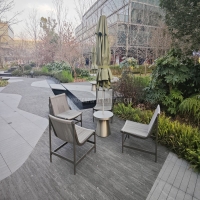Welcome to the website for landscape facilities products and knowledge.
How does the trash can’s design ensure it can be easily identified by color-blind users?
For color-blind individuals, distinguishing between differently colored trash cans can be a challenge. To address this, modern waste bin designs incorporate multiple accessibility features beyond color coding.
1. Shape and Size Variations: Recycling bins often use distinct shapes (e.g., circular for paper, triangular for plastic) to create instant visual or tactile recognition.
2. High-Contrast Labels: Bold black-and-white symbols or written labels (e.g., "PLASTIC," "GLASS") provide clear identification regardless of color perception.
3. Tactile Indicators: Raised Braille lettering or textured surfaces (dots, ridges) allow identification by touch, benefiting both color-blind and visually impaired users.
4. Pattern Differentiation: Stripes, checkered designs, or unique graphic patterns supplement color cues to distinguish waste streams.
5. Strategic Color Choices: Even when using color, designers select hues with distinct brightness levels (e.g., dark blue vs. bright yellow) that remain distinguishable to most color-blind people.
These inclusive design principles align with universal accessibility standards, ensuring public waste systems work equitably for all users. Municipalities and manufacturers increasingly adopt such features to create truly barrier-free recycling experiences.
Related search:

Recommendation
Metal structure rattan chair without armrests for single person, with woven seat and backrest.